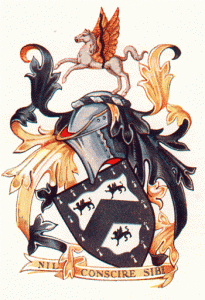The Finches were a major political family in England over several hundred years. Sir William Finch had been an attendant knight of Henry VIII. Sir Moyle Finch had married Elizabeth, daughter of Sir Thomas Heneage, former Vice Chamberlain of Queen Elizabeth I. She was widowed early, became Viscountess Maidstone, then Countess of Winchelsea and that title passed to her male heirs. Her third son was Sir Heneage Finch, Speaker of the House of Commons and his son, Heneage, became Solicitor General and first Earl of Nottingham. He had twin sons, Daniel and Heneage. Daniel succeeded as Earl of Nottingham and seventh Earl of Winchelsea; twin brother Heneage went through Christ Church Oxford and into the House of Commons, being made a peer in 1705 as the first Earl of Aylesford. It was Daniel and his father Heneage who purchased the Milton Keynes Estate from the Stafford family in 1677.
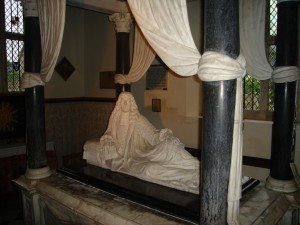 The Finch family home was at Eastwell in Kent, but the family was to acquire property in various parts of England. They owned the estate at Ravenstone about five miles north east of Milton Keynes and the Finch Chapel was added to the parish church of All Saints to accommodate the body of Heneage Finch. The monument to him is a magnificent ‘four poster’ complete with stone draperies. Heneage Finch also owned Nottingham House which his son sold to William III who changed the name to Kensington Palace.
The Finch family home was at Eastwell in Kent, but the family was to acquire property in various parts of England. They owned the estate at Ravenstone about five miles north east of Milton Keynes and the Finch Chapel was added to the parish church of All Saints to accommodate the body of Heneage Finch. The monument to him is a magnificent ‘four poster’ complete with stone draperies. Heneage Finch also owned Nottingham House which his son sold to William III who changed the name to Kensington Palace.
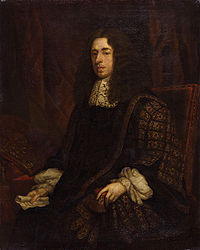 Heneage Finch 1621-1682 was (probably) born at Eastwell in Kent, the eldest son of Sir Heneage Finch, Recorder of London, by his first wife Frances Bell, daughter of Sir Edmond Bell of Beaupre Hall, Norfolk. He was created Baron Finch in January 1673 and Earl of Nottingham in May 1681. In 1660 he became Solicitor General then Attorney General in 1670, and in 1675 Lord Chancellor.
Heneage Finch 1621-1682 was (probably) born at Eastwell in Kent, the eldest son of Sir Heneage Finch, Recorder of London, by his first wife Frances Bell, daughter of Sir Edmond Bell of Beaupre Hall, Norfolk. He was created Baron Finch in January 1673 and Earl of Nottingham in May 1681. In 1660 he became Solicitor General then Attorney General in 1670, and in 1675 Lord Chancellor.
He married Elizabeth Harvey, daughter of William Harvey, 30 July 1646 and they had three children, Daniel, Heneage and Elizabeth. His son Daniel inherited his Buckinghamshire estates and his earldom, and would later also inherit the Earldom of Winchelsea. His younger son Heneage Finch, 1st Earl of Aylesford, also had a distinguished career as a lawyer and politician and was Solicitor General 1679-86.
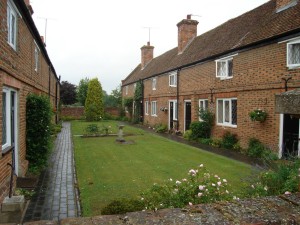 At Ravenstone, a few miles north of Milton Keynes, where he lived for part of the time, he established alms houses for six elderly men and six elderly women arranged in two blocks leading off the churchyard. These were available for the needy of Milton Keynes as well as for Ravenstone.
At Ravenstone, a few miles north of Milton Keynes, where he lived for part of the time, he established alms houses for six elderly men and six elderly women arranged in two blocks leading off the churchyard. These were available for the needy of Milton Keynes as well as for Ravenstone.
He died in London in1682, a year after becoming Earl of Nottingham but was buried at Ravenstone.
Daniel Finch 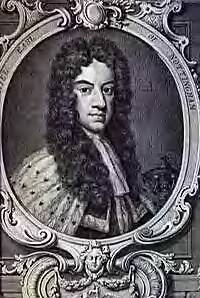 1647-1730 2nd Earl of Nottingham followed his father into politics. He declined the office of Lord Chancellor under William and Mary, but accepted that of secretary of state, retaining it till December 1693. Under Anne in 1702 he again accepted the same office in the ministry of Lord Godolphin, but finally retired in 1704. In 1673, he inherited the Isle of Foulness through his first wife, Lady Essex Rich, and the island remained in the Finch Family until 1915. He bought the Milton Keynes estate with his father in 1677 and all the property became his on his father’s death in 1682. He added to the estate in 1694 with the purchase of Burley on the Hill in 1694 wh
1647-1730 2nd Earl of Nottingham followed his father into politics. He declined the office of Lord Chancellor under William and Mary, but accepted that of secretary of state, retaining it till December 1693. Under Anne in 1702 he again accepted the same office in the ministry of Lord Godolphin, but finally retired in 1704. In 1673, he inherited the Isle of Foulness through his first wife, Lady Essex Rich, and the island remained in the Finch Family until 1915. He bought the Milton Keynes estate with his father in 1677 and all the property became his on his father’s death in 1682. He added to the estate in 1694 with the purchase of Burley on the Hill in 1694 wh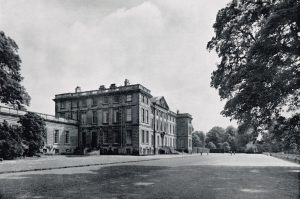 ere he proceeded to erect a grand Palladian mansion in the next six years. He was said to have been his own architect, but is thought to have consulted Christopher Wren.
ere he proceeded to erect a grand Palladian mansion in the next six years. He was said to have been his own architect, but is thought to have consulted Christopher Wren.
On the accession of George I he was made Lord President of the Council, but in 1716 he finally withdrew from office. He succeeded as 7th Earl of Winchilsea on 9 September 1729 shortly before he died. His great grandmother had been the 1st Countess of Winchilsea, and the title had passed through cousins by a rather circuitous route.
He was public spirited and was the first of at least five generations of Finches to have been a governor of the nearby Grammar School in Oakham (now Oakham School), a sister foundation of Uppingham School.
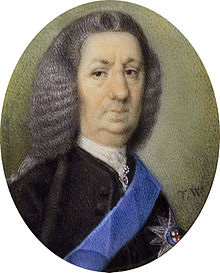 Daniel Finch 1689-1769 3rd Earl of Nottingham and 8th Earl of Winchilsea was the eldest son (of ten children) from his father’s second marriage to Anne Hatton, daughter of Christopher Hatton, Viscount Hatton. (Later generations of the family were to call themselves Finch-Hatton.) As Lord Finch, he was elected when only 21 as Member of Parliament for Rutland. He remained its member until he succeeded to the Earldom in 1730, also serving as comptroller of the royal household from 1725 to 1730. Winchilsea supported the creation of London’s Foundling Hospital, a charity providing home and education for some of the capital’s many abandoned children. He was one of the original governors for this organisation, founded in 1739.
Daniel Finch 1689-1769 3rd Earl of Nottingham and 8th Earl of Winchilsea was the eldest son (of ten children) from his father’s second marriage to Anne Hatton, daughter of Christopher Hatton, Viscount Hatton. (Later generations of the family were to call themselves Finch-Hatton.) As Lord Finch, he was elected when only 21 as Member of Parliament for Rutland. He remained its member until he succeeded to the Earldom in 1730, also serving as comptroller of the royal household from 1725 to 1730. Winchilsea supported the creation of London’s Foundling Hospital, a charity providing home and education for some of the capital’s many abandoned children. He was one of the original governors for this organisation, founded in 1739.
He was made a Knight of the Garter in 1752.
He first married Lady Frances Feilding, daughter of Basil Feilding, 4th Earl of Denbigh and Hester Firebrace, with whom he had a daughter, Lady Charlotte. He later married Mary Palmer, daughter of Sir Thomas Palmer, 1st Baronet Palmer. They had four daughters: Ladies Heneage, Essex, Hatton and Augusta, and four more who died young. They died unmarried and there are no known descendants. The title of Earl of Winchilsea passed to his nephew George, son of his brother William.
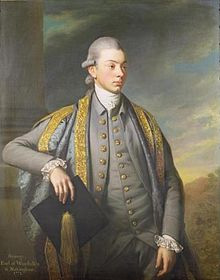 George Finch 1752-1826 9th Earl of Winchilsea did not, however, succeed to the title of Earl of Nottingham. He was Lord Lieutenant of Rutland. One of his major interests was cricket. In about 1784, Winchilsea was one of the prime movers in the foundation of the White Conduit Club (WCC), so–called because it played on White Conduit Fields. WCC was ostensibly an exclusive club that “only gentlemen” might play for, but the club did employ professionals and one of these was the bowler Thomas Lord, a man who was recognised for his business acumen as well as his bowling ability. However White Conduit Fields was an open area allowing members of the public, including the rowdier elements, to watch the matches and to voice their opinions on the play and the players. The White Conduit gentlemen were not amused by such interruptions and decided to look for a more private venue of their own. George Finch and Colonel Charles Lennox commissioned Lord to find a new ground and offered him a guarantee against any losses he may suffer in the venture. So Lord took a lease from the Portman Estate on some land at Dorset Fields in Marylebone, where Dorset Square is now sited; the ground was prepared and opened in 1787. The first match was on Monday 21 May 1787 was between the White Conduit Club and Middlesex. This was Lord’s first ground. It was originally called the New Ground but was soon renamed Lord’s Cricket Ground and, since it was in Marylebone, the WCC on relocating there decided to call themselves Marylebone Cricket Club. The Earl of Winchilsea was one of its early leading lights.
George Finch 1752-1826 9th Earl of Winchilsea did not, however, succeed to the title of Earl of Nottingham. He was Lord Lieutenant of Rutland. One of his major interests was cricket. In about 1784, Winchilsea was one of the prime movers in the foundation of the White Conduit Club (WCC), so–called because it played on White Conduit Fields. WCC was ostensibly an exclusive club that “only gentlemen” might play for, but the club did employ professionals and one of these was the bowler Thomas Lord, a man who was recognised for his business acumen as well as his bowling ability. However White Conduit Fields was an open area allowing members of the public, including the rowdier elements, to watch the matches and to voice their opinions on the play and the players. The White Conduit gentlemen were not amused by such interruptions and decided to look for a more private venue of their own. George Finch and Colonel Charles Lennox commissioned Lord to find a new ground and offered him a guarantee against any losses he may suffer in the venture. So Lord took a lease from the Portman Estate on some land at Dorset Fields in Marylebone, where Dorset Square is now sited; the ground was prepared and opened in 1787. The first match was on Monday 21 May 1787 was between the White Conduit Club and Middlesex. This was Lord’s first ground. It was originally called the New Ground but was soon renamed Lord’s Cricket Ground and, since it was in Marylebone, the WCC on relocating there decided to call themselves Marylebone Cricket Club. The Earl of Winchilsea was one of its early leading lights.
In 1767, as a fifteen year old, he wrote to his mother describing a trip to Milton Keynes and other places owned by his father including Ravenstone. He was not impressed by the property at Milton Keynes although he himself was comfortably accomodated at the Rectory by Dr Dering, the Rector at the time. The property he describes may have been what is now known as Burley Cottages, but we cannot be certain. View his letter.
George Finch never married because his mother did not approve of his intended. He had two children, and an Act of Parliament was required to ensure that they inherited. His estates and property including Burley on the Hill and those in Buckinghamshire passed to his illegitimate son George.
George Finch 1794-1870 was a politician. He sat as Member of Parliament for Lymington between 1820 and 1821, for Stamford between 1832 and 1837 and for Rutland between 1846 and 1847.
Finch was twice married. He married firstly, Jane, daughter of Vice-Admiral John Richard Delap, in 1819. After her early death in 1821 he married Lady Louisa, daughter of Henry Somerset, 6th Duke of Beaufort, in 1832. His son, George Henry, by his second wife, was also a politician.
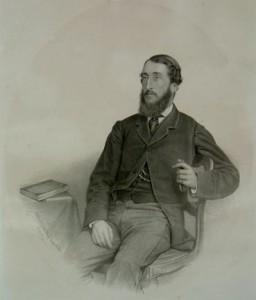 George Henry Finch 1835-1907 was an English Conservative politician, who represented Rutland in the House of Commons for 40 years, becoming Father of the House of Commons. In Milton Keynes he built the semi-detached houses opposite the Swan Inn, probably for farm foremen, they being quite substantial houses. His portrait still hangs in the parish church of All Saints. It is likely that he also
George Henry Finch 1835-1907 was an English Conservative politician, who represented Rutland in the House of Commons for 40 years, becoming Father of the House of Commons. In Milton Keynes he built the semi-detached houses opposite the Swan Inn, probably for farm foremen, they being quite substantial houses. His portrait still hangs in the parish church of All Saints. It is likely that he also 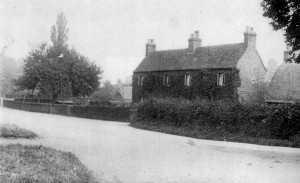 replaced other cottages in the village although the housing stock was never replaced wholesale as happened in some ‘estate’ villages. He married twice – to Emily Eglantine Balfour in 1861, then after Emily died in 1865, he married Edith Montgomery in 1871.
replaced other cottages in the village although the housing stock was never replaced wholesale as happened in some ‘estate’ villages. He married twice – to Emily Eglantine Balfour in 1861, then after Emily died in 1865, he married Edith Montgomery in 1871.
Allan George Finch 1863-1914 Son of George Henry Finch, was sent to fight under General Carrington in Matabeleland in1893. His period of holding the estate was comparatively short (only seven years). He had an interest in the history of the Finch Family and in 1901 a report was published by the Stationary Office on the papers which he held. These papers contain most of the correspondence of the earlier Finches. He died unmarried and the estate passed to his half brother Wilfred on his death.
Wilfred Henry Montgomery Finch 1883-1939 was the son of George Henry Finch’s second wife Edith Montgomery. He served as an officer in the first World War, latterly in the Royal Engineers. He was the last member of the Finch family to hold the estate for any length of time. On his death, the estate passed to Colonel James Robert Hanbury, great nephew of George Henry Finch, who sold out within the year.
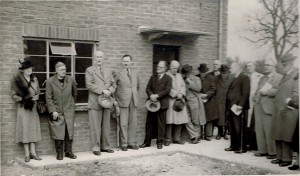 Jasmine Finch 1880 – ?, Wilfred’s elder sister, was brought back to the village in 1950 to open the 600th Council House built by Newport Pagnell Rural District Council which was one of a group of twelve in Milton Keynes Village. The close in which they were built was named Finch Close.
Jasmine Finch 1880 – ?, Wilfred’s elder sister, was brought back to the village in 1950 to open the 600th Council House built by Newport Pagnell Rural District Council which was one of a group of twelve in Milton Keynes Village. The close in which they were built was named Finch Close.

